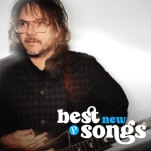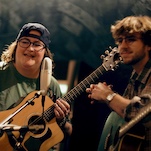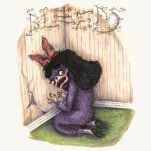Allen Toussaint: He Played Something Sweet, Something Funky
Photo Courtesy of Nonesuch RecordsAllen Toussaint, who died Monday in Madrid of an apparent heart attack, was arguably the greatest songwriter/producer to ever come out of New Orleans. He made some fine records under his own name, but his finest recordings were issued under other names—names like Lee Dorsey, Paul McCartney, Otis Redding, The Rolling Stones, Patti LaBelle, Elvis Costello, The Meters, The Band, Dr. John, Robert Plant, Robert Palmer and Ernie K-Doe. Toussaint was a musical giant.
You would never know it, though, from spending time with him. Always dressed in crisp, expensive clothes with a surprising color accent and always speaking in the soft, purring voice of a late-night disc jockey, he deflected attention as skillfully as a trained therapist. But the sly humor of his songs soon surfaced in his conversation as well, emerging through his bushy mustache in a hearty chuckle.
During the 1986 New Orleans Jazz & Heritage Festival, I spent an afternoon with him at his place of work, the Sea-Saint Recording Studios, which was named after its owners, Marshall Sehorn and Allen Toussaint. Tucked inside an unassuming office building in a quiet, residential neighborhood, the studio walls were decorated with gold albums and autographed photos from Paul McCartney, The Neville Brothers, Patti Labelle and others who had worked there.
When I asked how he fit into the New Orleans keyboard tradition, he answered by sitting down at the piano and playing examples from every key member in that lineage—Professor Longhair’s wild rumba beat, Fats Domino’s hypnotic triplets, Tuts Washington’s rag-influenced boogie-woogie, Smiley Lewis’s blues-influenced boogie-woogie, and James Booker’s bravura cadenzas. “I think I’m a little bit of all those people,” Toussaint concluded. “I hope so, because they’re each so strong in their own right.”
What ties them altogether, he added is “the beat. The sound of a second-line parade marching down the street makes New Orleans music as unique as it is…The strut, the pride, that syncopated rhythm—especially coming back from the cemetery—keeps you on your toes. It leaks into all our music, even jazz. If you listen to Ellis Marsalis sometimes, you’ll hear that, yes, he’s one of those guys.”
What Toussaint added to that tradition were the melodic hooks and clever catch phrases that turned those second-line rhythms into hit singles far beyond New Orleans. First it was just the music (he wrote popular instrumentals such as “Java” for Al Hirt and “Whipped Cream” for Herb Alpert), but then he added words for songs such as “Mother-in-Law” by Ernie K-Doe, “Ya” by Lee Dorsey “It’s Raining” by Irma Thomas and “I Like It Like That” by Chris Kenner—all before he turned 24.
“Writing songs seemed so natural to me,” he said that day, “that I assumed all musicians wrote songs, though I found out they don’t. If you play all day long like I do, you come up with interesting ideas and you want to organize them. At least that’s what happened to me. I didn’t try to write in a New Orleans style; I write in that style just because I’m from here.”
When he got out of the army in 1965, Toussaint went back to work with Dorsey, crafting such national hits as “Ride Your Pony,” “Working in the Coal Mine” and “Holy Cow.” Otis Redding took Thomas’ “Ruler of My Heart,” changed a few words and enjoyed a 1963 hit with his revised version, “Pain in My Heart,” later covered by The Rolling Stones and credited to Toussaint’s musical alias Naomi Neville.
-

-

-

-

-

-

-

-

-

-

-

-

-

-

-

-

-

-

-

-

-

-

-

-

-

-

-

-

-

-

-

-

-

-

-

-

-

-

-

-








































